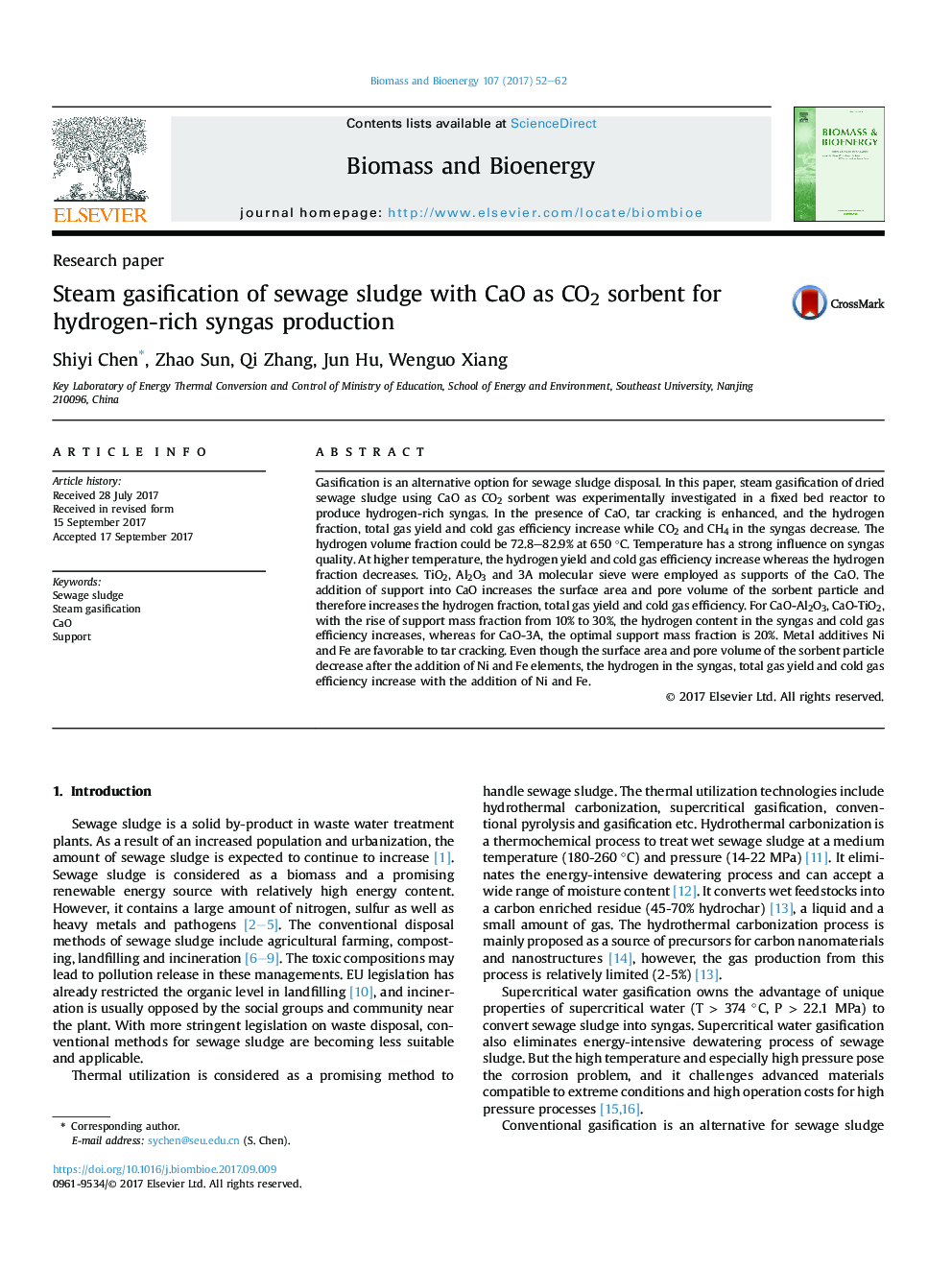| Article ID | Journal | Published Year | Pages | File Type |
|---|---|---|---|---|
| 4996120 | Biomass and Bioenergy | 2017 | 11 Pages |
â¢Sewage sludge is gasified with steam and CaO for hydrogen-rich syngas production.â¢TiO2, Al2O3 and 3A molecular sieve are employed as supports of CaO.â¢High concentration of hydrogen is obtained in the gasification.â¢Ni intensifies tar cracking and enhances syngas production.
Gasification is an alternative option for sewage sludge disposal. In this paper, steam gasification of dried sewage sludge using CaO as CO2 sorbent was experimentally investigated in a fixed bed reactor to produce hydrogen-rich syngas. In the presence of CaO, tar cracking is enhanced, and the hydrogen fraction, total gas yield and cold gas efficiency increase while CO2 and CH4 in the syngas decrease. The hydrogen volume fraction could be 72.8-82.9% at 650 °C. Temperature has a strong influence on syngas quality. At higher temperature, the hydrogen yield and cold gas efficiency increase whereas the hydrogen fraction decreases. TiO2, Al2O3 and 3A molecular sieve were employed as supports of the CaO. The addition of support into CaO increases the surface area and pore volume of the sorbent particle and therefore increases the hydrogen fraction, total gas yield and cold gas efficiency. For CaO-Al2O3, CaO-TiO2, with the rise of support mass fraction from 10% to 30%, the hydrogen content in the syngas and cold gas efficiency increases, whereas for CaO-3A, the optimal support mass fraction is 20%. Metal additives Ni and Fe are favorable to tar cracking. Even though the surface area and pore volume of the sorbent particle decrease after the addition of Ni and Fe elements, the hydrogen in the syngas, total gas yield and cold gas efficiency increase with the addition of Ni and Fe.
